

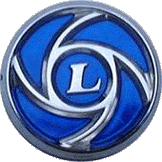
 |
 |
|||||||
© 2024 |
Technical Article: Annual Cooling System FlushingWhen preparing to perform the annual flush of the cooling system, obtain a good quality flushing detergent. Make sure it states that it is not harmful to aluminum, and ones with corrosion inhibitors seem to work the best. Prestone has a two part flush powder - one half is detergent for the flush, the second part is corrosion/rust inhibitor used in the rinse flush. First disconnect the heater core from the flushing by removing the feed and return hoses. Reverse flush it later by using a cut off garden hose attached to the heater return port (normally connected to a pipe that runs to the water pump cover) and connect a length of hose to the supply side of the heater core (normally connected to the left hand head) and route it into a drain. Reconnect the two engine side heater hoses using a suitable length of copper tubing, or if using a power flush connection, this is a good place to connect the tap. This bypass of the heater core will keep you from depositing the crud from the engine and cooling system right into your heater core. (You would only notice this when the weather turns colder and you were wondering why the heater does not work, as you panic to think that the cooling system has gone too.) Drain the cooling system and radiator by removing the lower hose on the radiator, disposing of the coolant properly. Remove the thermostat and reinstall the "water elbow" or "gooseneck". Follow the directions for flushing the system, being careful not to boilover or overheat the heads. If using a power flush system using the garden hose, make sure that the water is on for the whole engine flush cycle. Never pour cold water into a hot engine, as you will surely warp the cylinder heads and possibly crack the block. While the cooling system is flushing, take a good look at the thermostat. If is is clean and tidy, test the thermostat by placing it in a sauce pan of water and bring it to a simmer on the stove. Use your wife's candy thermometer (you do this when she is out shopping, of course) to observe the temperature when the thermostat opens, and make sure the thermostat opens. It should open fully, and if the boil is not too agressive, it is a kick to watch it open and close for the first time. After verifying that the thermostat opened at the proper temperature, remove it from the burner and add cold water to the pan to slowly cool the water. Observe that the thermostat closes. If the thermostat is dirty, or does not fully open or close, discard it and buy a new one with a new gasket. Most are less than 5 pounds sterling or $8 US, which is somewhat less costly than replacing a burst hose on an outing, or, the cylinder heads and gaskets. By now the flush has progressed nicely and your neighbors are wondering why there is a steaming river running through the development. Shut down the engine, allowing the engine to cool normally. You will find that the garden hose kept the engine from heating past one quarter on the gauge (now just how long is that hose, anyway?). Now is a good time to flush the heater core as described above. After flushing, reconnect the heater core to the supply and return lines, open all drain taps to drain out the flush and making sure that the taps are clear and flowing, repeat with fresh water if necessary. Replace the thermostat and gasket, carefully positioning the jiggle pin or bleed hole at the 12:00 o'clock position. Replace and tighten the drain taps in the block, and tighten all the hose clamps. When the engine is just warm to the touch, refill the system with a mix of 50/50 destilled water/antifreeze. Use antifreezes that have corrosion inhibitors. I have found that the environmentally friendly antifreezes do not last more than 6 months, and eat your engine. Regards Glenn Merrell, 73 Mark II Stag Posted on Saturday, November 19 @ 21:24:59 CST |
4/20/2024   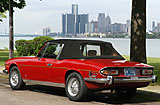 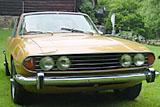 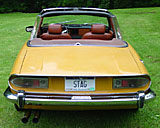 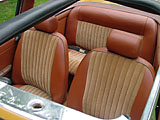 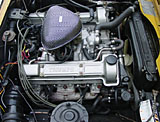 | ||||||